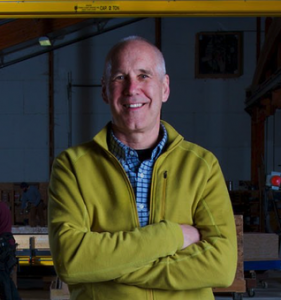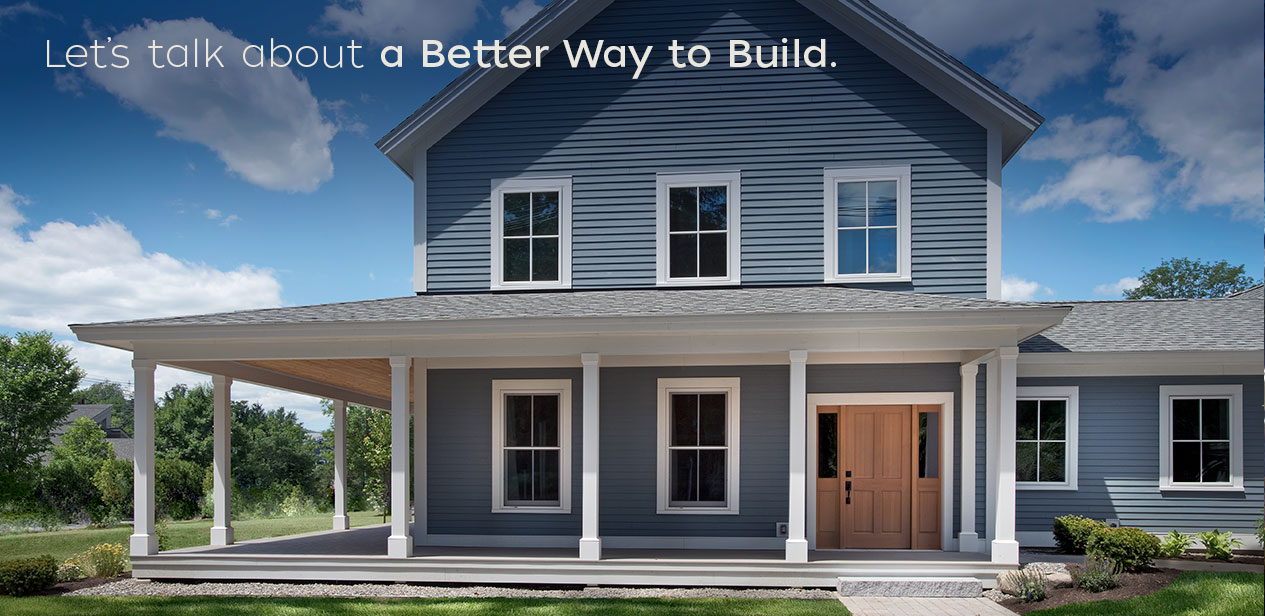Podcast: Play in new window | Download | Embed

In the early 1800s there was a rapid migration westward across the United States of America. Newer, faster ways of building were needed to house people in the booming towns of the “early west”. The craft of careful timber framed construction quickly gave way to mass production of stick frame housing.
Tedd Benson refers to stick framing as pretty basic shelter. It went up almost overnight, but the legacy continues as a “worse form of building that then become a standard”.
Tedd says, “you had to have skill and knowledge and training to execute a good quality, traditional timber framed structure”. These qualities were in short supply during the US westward migration of the early 1800s.
Re-Inventing Quality Construction
In the early 1970s when Tedd wanted to re-introduce quality timber frame construction in the US, he says there was literally no one to learn from. He did however learn from “instructions” left behind in the work of the old masters.
Old barns and hundred year old buildings are testament to the resilience of quality construction. Tedd studied these old buildings in order to re-invent timber frame construction.
Between 1974 and 1984, Tedd and his team continued to learn from old buildings they studied. Bensonwood refined their processes, tooling and designs in the pursuit of quality building and Tedd started sharing his learning.
The Japanese Apprentice
In 1984, Bensonwood hosted a Japanese temple builder Masahiko Ishikawa. Ishikawa had just finished a 10 year apprenticeship. His knowledge, skill and respect for the art of building came from over 2,000 years of Japanese history. Unlike the American heritage that had been mostly lost in a race to build lots of houses, quickly, traditional Japanese building techniques have been passed down through generations.
It seems that quality is internationally appealing. This would be a good lesson for us today in New Zealand and Australia. What can we learn from traditional construction around the world, and apply to our own needs?
Buildings Are Precious
Another important lesson from the past, says Tedd, is that buildings are precious. The materials that make buildings are precious. The time spent by those who make buildings, is precious.
“The buildings that people live in, the buildings that define our civilisation and who we are as a people, deserve skills, training and the best capabilities of the civilisation at that time.”

Clients Can’t Demand What they Don’t Know
“We could no longer live in a normal house” is a common sentiment of people who get to experience a high performance (fit for purpose) home. Our challenge in the industry therefore, is to grow the number of people who demand this level of achievable performance.
A higher standard should become the new norm, says Tedd. “A flimsy, site-built, stick frame building is a poor standard for a human being.”
Passive House Standard
Through Bensonwood and now Unity Homes, Tedd Benson also provides Passive House buildings. Tedd’s view is that the Passive House is a really high standard that really works to create a robust shelter. “The Passive House standard should be a definition of how people live in the 21 Century.”
Links
- Bensonwood timber frame and Passive House custom homes.
- Unity Homes for high quality, prefabricated homes.
- Tektoniks advanced building components.
- Tedd’s books on Amazon
For a fascinating look at the history of Unity Homes, including Tedd’s first forays into prefabrication, check out this short white paper.
There’s also some gold in Tedd’s blog archive, The New House Rules.


Leave a Reply